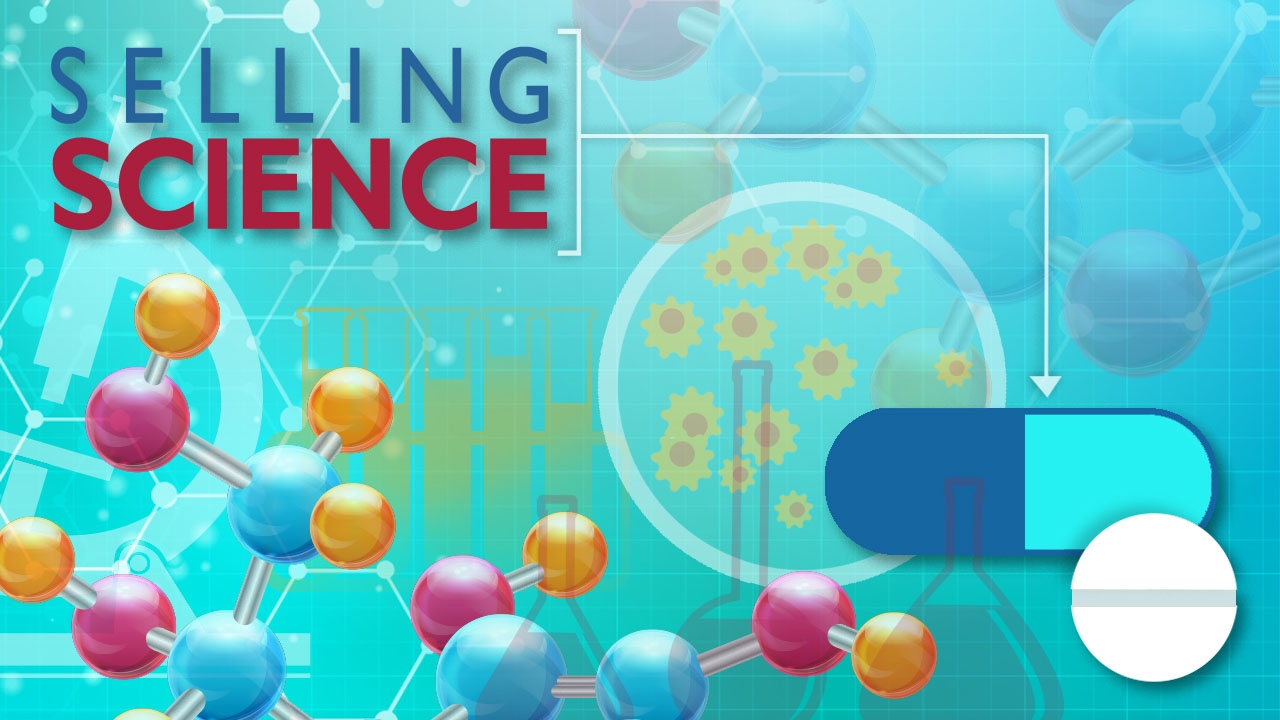Scientific breakthroughs can’t change the world if they can’t break out of the laboratory. So students in UAB’s Master of Science in Biotechnology program are learning how to capitalize on those discoveries, translating them into innovative new treatments that benefit the public.
Think of it as a mashup of laboratory knowledge and business sense. Shibli Rahman found the combination attractive. Like many students in the program, he wanted to work with science or technology, but not by going into traditional research. After graduating from UAB in 2013 with a bachelor’s degree in biomedical engineering, he desired a career “that looked at science differently,” he says.
“You have to use the science part of your brain to determine if the science is valid,” Rahman says. “But you also must think beyond that, into what you can do with the science, if it’s going anywhere, and if you can license it.”
"You have to use the science part of your brain to determine if the science is valid. But you also must think beyond that, into what you can do with the science." —Shibli Rahman
New Approaches
The focus on finding and developing scientific research with possible commercial applications is the heart of the program for good reason. In recent years, federal grant funding for scientific research has decreased dramatically. As a result, institutions of higher learning have had to find novel ways to fund experimental research, says Kathy Nugent, Ph.D., the first director of the biotechnology program—based in the UAB School of Health Professions Department of Clinical and Diagnostic Sciences—and director of UAB’s Bill L. Harbert Institute for Innovation and Entrepreneurship.
Bringing research projects to market is one solution to the funding issue—and it has created new job opportunities on both the academic and commercial sides. But finding and fostering these projects can be difficult.
By training students to look at a discovery, analyze it, and improve it for commercial development, the program “shows them how to look at problems and come up with solutions using technology,” says interim biotechnology program director Tino Unlap, Ph.D. “Then we train them to take that technology from the bench to the market.”
Extra Credit
To teach this type of innovative thinking, the biotechnology program is divided into three parts, says Unlap. Students start out in classroom lectures that introduce them to the basics of the science they’ll encounter. From there, the students get hands-on experience in the lab.
Even in the first stages of the program, the students work on projects that could impact future business development or existing start-ups in the area. One such task was compiling a list of companies that would make good strategic partners for Blondin Bioscience. Born from a UAB research breakthrough and housed in Birmingham’s Innovation Depot, Blondin develops innovative tools for cancer care, including laboratory-produced monoclonal antibodies and a blood test that can reveal the efficacy of treatments.
The suggestions from the students’ research will help the company grow, says Blondin CEO Brad Spencer. As for the students, “the benefit is that they learn by doing, and the companies benefit because they get a product that they wouldn’t necessarily have the luxury to pay for,” Nugent adds.
Another significant recent project was the development of the BioAlabama report, a listing of biotechnology companies based in the state. The students started “with a list from about two years ago,” says Rahman. “We had to compile lists of companies that fell into different categories and update the information.”
But this assignment wasn’t just for class credit. The Alabama Department of Commerce can use this information to recruit new life science companies to the area, says Nugent. “That’s a huge, significant contribution.”
"We're teaching them techniques to solve problems—to actually find potential drugs." —Tino Unlap
Practical Applications
In the third phase of the biotechnology program, the students apply the knowledge they’ve gained by examining technologies developed at UAB. “Students divide into groups and begin to move those technologies forward,” says Unlap. “We’re teaching them techniques to solve problems—to actually find potential drugs,” for example.
This internship may be the most important part of the whole program, he adds. “We ask the students to identify an area they’re interested in,” says Unlap. “We find an organization on- or off-campus that fits, and pair them with the principal investigator.”
By working directly with companies that have a close relationship with UAB, students are able to work on live experimentation. As a result, “after three semesters, they’re ready to go out into the life sciences market and make their mark.”
In Spencer’s words, “science for science’s sake is cool, but science that benefits humanity is better. Humanity benefits when there is easy access to the molecule that delivers a therapy that patients weren’t able to get before. That’s what UAB has made a concerted effort to do, and that’s what this degree is about.”
Thinking Differently
Rahman has already noticed a difference in his own approach. The program has “made me think about science differently,” he says. “Before, on benchtop [research], I noticed that the goal of many researchers was to publish their work in scientific journals,” he says. “Now, I’m starting to think more about what we can do with that research beyond the laboratory.”
During his internship with the UAB Digital Media program in the College of Arts and Sciences, he found his passion: branding and marketing science. “I originally came in interested in patent law and wanting to work with technology in that way,” says Rahman. “But I decided that I wanted to also engage my creative side. The biotechnology program helped me to merge them.”
From an outside perspective, the program “is just great for these kids,” says Spencer. “I wish I could have done it.”


